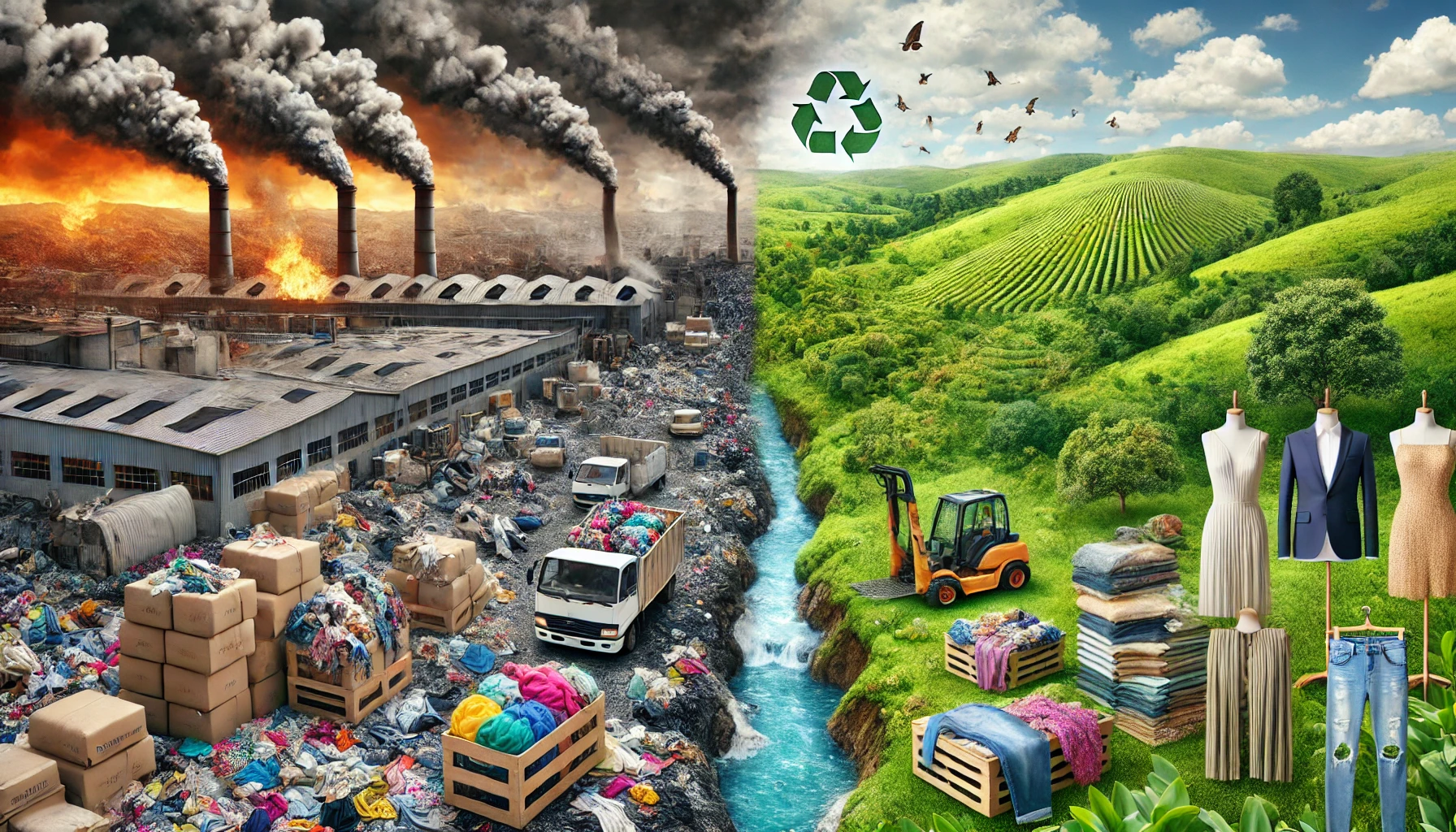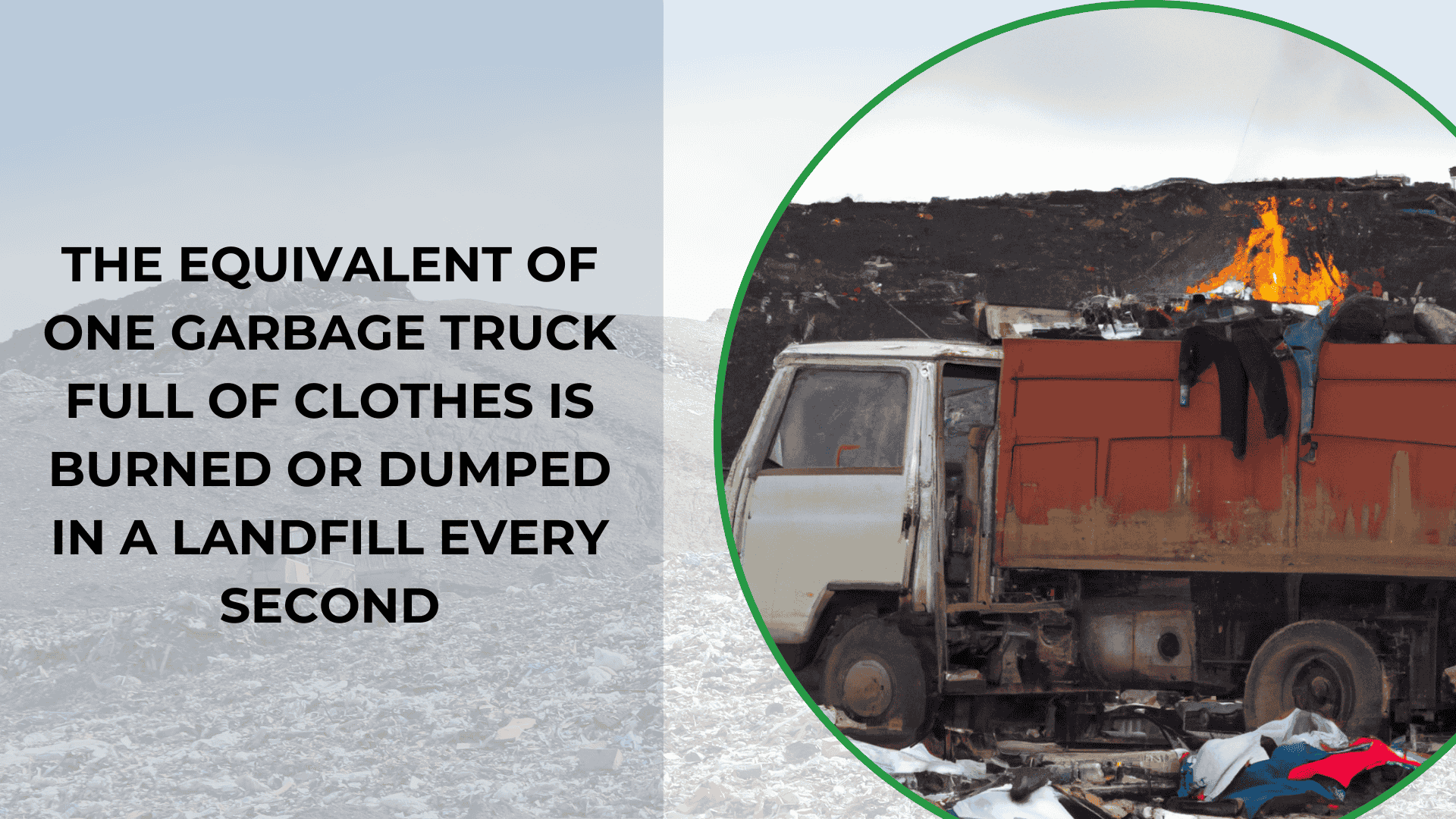
26 Mar Bifurcation of Fashion Industry: The Environmental Implications of Fast Fashion vs. Sustainable Fashion
The fashion industry, long regarded as a symbol of self-expression and cultural evolution, is increasingly under scrutiny for its environmental impact. According to projections, emissions from the textile sector are expected to increase by over 60% by 2030.

With clothing sales doubling from 100 to 200 billion units annually and the average lifespan of garments decreasing by 36%, the industry’s rapid expansion has come at a significant ecological cost. This growth has led to the bifurcation of fashion into two distinct models: fast fashion, which prioritizes mass production and affordability, and sustainable fashion, which focuses on ethical sourcing, environmental consciousness, and longevity.
While fast fashion dominates the market due to its low costs and quick turnaround, the environmental consequences of this model are alarming:
- Carbon Emissions: The fashion industry is the second-largest industrial polluter, responsible for about 10% of global emissions—more than the combined output of air travel and maritime transport.
- Water Consumption and Pollution: Producing textiles demands immense water resources, with annual consumption reaching 93 billion cubic meters. Textile dyeing alone contributes to 20% of global wastewater, much of which is released untreated into rivers and seas, especially in countries with lax environmental regulations.
- Textile Waste Burdening Landfills: The throwaway culture fueled by fast fashion results in 92 million tons of clothing waste each year, filling landfills and exacerbating pollution.
In response, sustainable fashion brands are redefining industry norms by integrating ethical sourcing, innovative materials, and circular economy principles. Sustainable fashion encompasses a range of practices that prioritize environmental responsibility, social justice, and economic viability. This includes designing garments for longevity, using environmentally friendly materials, reducing waste, and decreasing emissions. Some of the best practices adopted by these pioneers include:
- Closed-Loop Recycling (Patagonia, Stella McCartney): Patagonia, an American outdoor clothing and gear brand, promotes garment take-back programs, where used clothing is recycled into new products, reducing textile waste. Stella McCartney, a designer fashion brand, integrates regenerative materials and upcycling to extend product life cycles.
- Eco-Friendly Dyeing Techniques (G-Star RAW, Pangaia): G-Star Raw, a Dutch denim clothing brand, has introduced a new denim collection dyed with pigments from volcanic rocks and soils. The process employs low-energy, cold-water dyeing, reducing environmental impact and advancing sustainability. On the other hand, Pangaia Lab has launched a new collection featuring biology-based dyeing technology by Colorifix. This process reduces water use by 49%, electricity by 35%, and CO2 emissions by 31% compared to conventional cotton dyeing.
- Innovative Sustainable Fabrics (Allbirds, Veja): VEJA, a French footwear and accessories brand, incorporates Brazilian and Peruvian organic cotton for the canvas and laces, Amazonian rubber for the soles, and innovative materials derived from recycled plastic bottles and recycled polyester. These choices enhance sustainability by reducing reliance on synthetic materials, minimizing environmental impact, and promoting the use of renewable resources.
Encouragingly, consumer preferences are evolving, with more individuals willing to invest in higher-quality, sustainable pieces.

Based on a survey commissioned by Fashion Revolution in leading European markets
The efforts of sustainable fashion brands and consumers’ increasing preference for sustainable fashion demonstrate that sustainability and business success can coexist, setting a positive example for the fashion industry.
As the divide between fast fashion and sustainable fashion deepens, the industry’s trajectory hinges on the choices made by consumers, businesses, and policymakers. While fast fashion’s environmental toll continues to rise, the momentum behind sustainable fashion signals a shift toward long-term accountability. The path forward demands not only responsible purchasing decisions but also systemic innovation. A truly sustainable future for fashion will require collective action, ensuring that creativity and commerce align with environmental stewardship.
Blog by Sakthi Kumararaja,
Associate, Frost & Sullivan Institute
